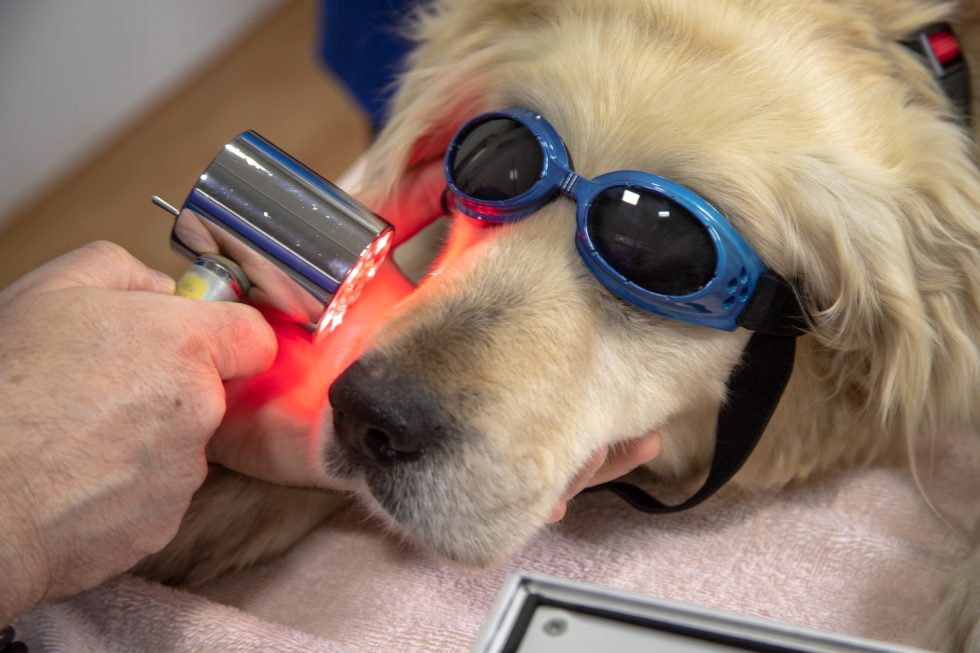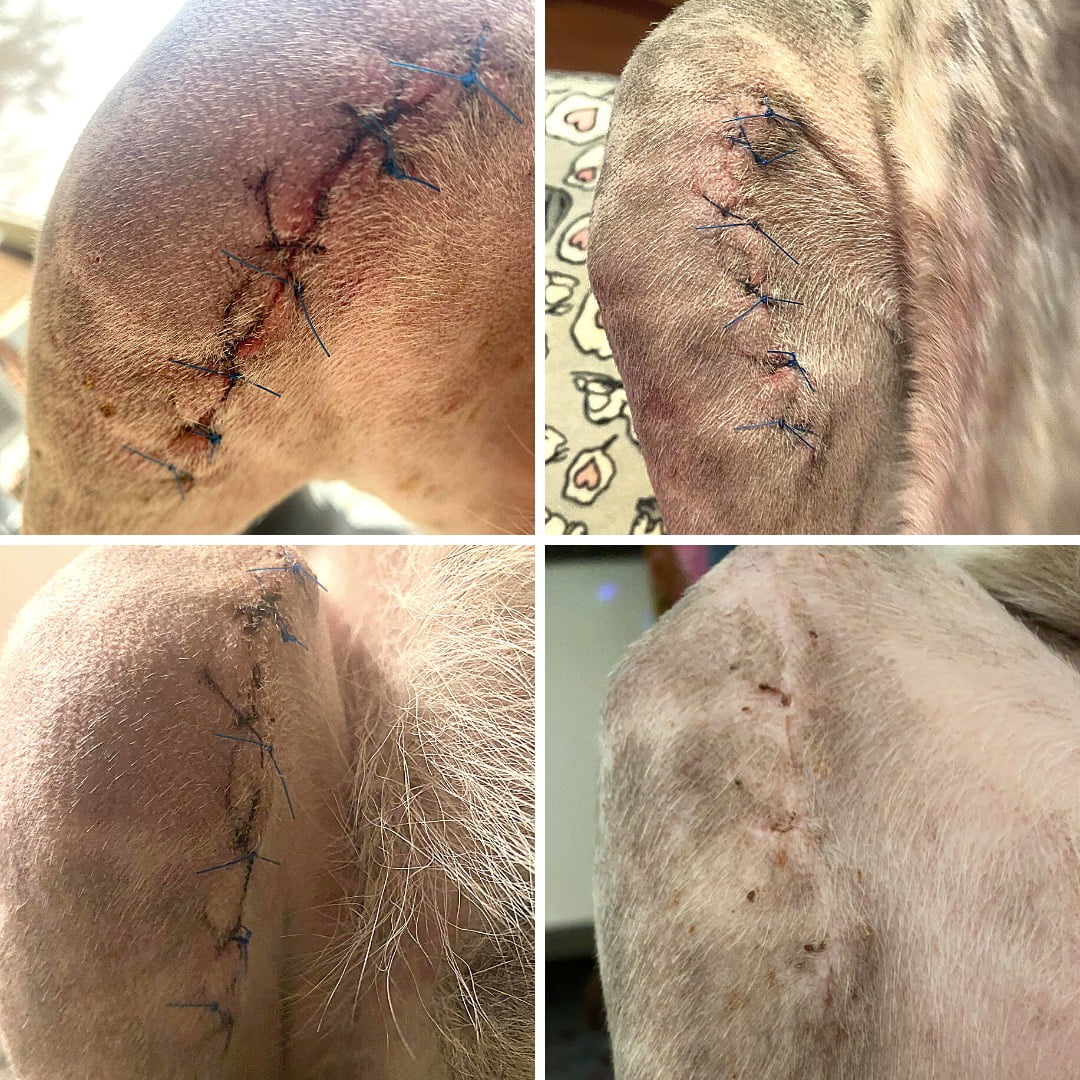Just How Red Light Therapy Can Improve Your Dog's Overall Health
Red Light Therapy has actually become an encouraging alternative for improving canine wellness. This non-invasive therapy stimulates cellular task and advertises recovery in pet dogs dealing with numerous disorders. Many family pet proprietors report visible advantages, including pain alleviation and improved wheelchair. Understanding the hidden devices and potential applications is important. What particular conditions can it address, and exactly how can it be securely incorporated right into a pet dog's care routines? The answers may shock you.
Comprehending Red Light Therapy: What It Is and Exactly how It Functions
Red light therapy has obtained popularity in human medicine, its application for pet dogs is significantly recognized for its possible advantages. This non-invasive therapy utilizes specific wavelengths of light, generally in the near-infrared and red spectrum, to stimulate mobile feature. The underlying concept involves the absorption of light by mitochondria, which boosts ATP manufacturing and enhances cellular metabolic rate.
As an outcome, red light therapy advertises improved flow and help in cells repair work. The therapy is delivered through devices such as lasers or LED panels, which can be directed at particular locations of a dog's body. Treatment sessions are typically short, making it a convenient choice for pet dog owners.
Recognizing this technology's devices can aid caretakers make notified decisions concerning their pet dog's healthcare. As research study remains to advance, the interest in red light therapy as a complementary treatment method for various canine problems is most likely to expand.

Advantages of Red Light Therapy for Dogs
Red light therapy offers a number of significant benefits for pet dogs, including effective discomfort relief and a sped up healing procedure. This therapy can boost mobility and adaptability, making it specifically important for aging or harmed family pets. As even more animal proprietors look for different therapies, understanding these advantages ends up being progressively important.
Pain Alleviation Applications
Several dog owners are transforming to red light therapy as a promising option for minimizing pain in their pets. This non-invasive treatment makes use of details wavelengths of light to pass through the skin, stimulating cellular activity and minimizing swelling. Canines dealing with persistent problems such as joint inflammation, hip dysplasia, or post-surgical pain might experience considerable alleviation through this therapy. Research studies show that red light therapy can enhance blood circulation, assisting to supply vital nutrients to impacted locations, even more adding to pain decrease. Additionally, it may aid to reduce the reliance on pharmaceutical painkiller, which typically come with unfavorable adverse effects. Consequently, numerous veterinarians are significantly advising red light therapy as a risk-free and reliable option for managing pain in dogs.

Accelerated Recovery Process
The advantages of red light therapy extend beyond pain relief, playing a vital duty in accelerating the recovery procedure for pets. This ingenious treatment advertises mobile regeneration, promoting the production of ATP, which enhances energy availability for healing tissues. Furthermore, red light therapy raises blood circulation, causing enhanced oxygen and nutrient distribution to wounded areas. This increased blood circulation not only help in faster recovery yet also minimizes swelling, a common obstacle to recovery. In addition, the therapy urges collagen production, essential for tissue fixing and regrowth. Overall, by helping with these biological procedures, red light therapy significantly shortens healing times, permitting pets to return to their normal activities quicker and with better vitality.
Boosted Mobility and Flexibility
Boosted mobility and flexibility are substantial advantages of red light therapy for dogs, specifically for those experiencing joint pain or tightness. This non-invasive treatment makes use of particular wavelengths of light to permeate cells, promoting boosted flow and reducing swelling. Consequently, pet dogs frequently experience remedy for pain connected with arthritis, hip dysplasia, or post-surgical healing. Normal sessions can promote mobile repair work and boost muscular tissue function, allowing dogs to reclaim their all-natural range of motion. Owners have actually reported noticeable enhancements in their pets' ability to run, leap, and take part in tasks they once delighted in (Red Light Therapy Dogs). Inevitably, red light therapy not only helps relieve discomfort but additionally contributes to a more energetic and satisfying lifestyle for canines, improving their total lifestyle
Conditions That Can Be Treated With Red Light Therapy
Red light therapy has gained popularity in different fields, its application in vet care, especially for pet dogs, has actually shown pledge in treating a range of conditions. This non-invasive treatment approach is thought to aid in reducing discomfort and swelling additional info related to arthritis, helping older pets reclaim movement. Additionally, it has been used to help in the healing of wounds, burns, and medical cuts, advertising faster recovery times.
Skin conditions, such as dermatitis and locations, might also react positively to red light therapy, lowering irritability and encouraging much healthier fur growth. The therapy can be beneficial for dogs experiencing from problems like hip dysplasia, ligament injuries, and muscle mass strains. By boosting mobile repair work and improving flow, red light therapy provides an alternative technique to enhancing the total wellness of pet dogs, supplying relief and promoting a far better high quality of life.
The Science Behind Red Light Therapy
Red light therapy operates on the concept of photobiomodulation, which includes the application of specific wavelengths of light to boost mobile processes. These wavelengths, generally varying from 600 to 1000 nanometers, pass through the skin and are absorbed by mitochondria, the energy-producing parts of cells. This absorption improves ATP manufacturing, resulting in boosted power availability for cellular features.

Research studies suggest that red light therapy may additionally regulate immune reactions and support total mobile health and wellness. By harnessing these organic devices, red light therapy uses a non-invasive treatment option that can add significantly to a canine's well-being and recuperation from numerous conditions.
Just How to Incorporate Red Light Therapy Into Your Dog's Regular
Incorporating red light therapy right into a canine's visit their website regimen can be a simple procedure, offered that pet dog owners approach it with treatment and consistency. Initially, picking an appropriate tool is fundamental, as alternatives range from portable devices to larger panels. Owners need to start by presenting the therapy slowly, permitting their pets to adapt to the light direct exposure. Sessions can be set up for around 10 to 20 minutes, ideally 2 to 3 times a week, depending on the dog's requirements and the suggestions of a veterinarian
Setting a comfortable setting is essential; utilizing a peaceful area where the dog feels unwinded can improve the experience. Throughout the sessions, proprietors can involve their pets with relaxing voices or gentle stroking to develop a relaxing atmosphere. Keeping track of the pet dog's action is critical to assure the therapy is delightful and valuable, ultimately helping to improve their overall well-being.
Safety Considerations and Measures for Red Light Therapy
When taking into consideration red light therapy for dogs, safety should always be a leading concern to assure a favorable experience. Family pet owners need to get in touch with a vet before starting any therapy, especially for pets with pre-existing problems or those taking drugs. It is necessary to select gadgets particularly designed for pets, as human tools may not be appropriate.
Proper eye defense is essential; both the handler and the pet must use goggles to secure their eyes from prospective harm. Additionally, sessions should be checked very closely to stay clear of overexposure. It is suggested to begin with much shorter sessions and progressively enhance duration based upon the canine's feedback.
Proprietors should additionally observe their family pets for any indicators of discomfort or adverse responses during and after therapy. By following these safety and security considerations, red light therapy can be a risk-free and beneficial choice for enhancing a pet dog's well-being.
Often Asked Questions
Exactly how Typically Should I Utilize Red Light Therapy on My Dog?

Can Red Light Therapy Replace Traditional Veterinary Therapies?
Red light therapy should not change typical veterinary therapies. While it might enhance treatments by advertising healing and decreasing pain, speaking with a veterinarian remains important for extensive care and dealing with underlying health concerns in pets.
Exist Any Type Of Side Impacts of Red Light Therapy for Dogs?
Red light therapy for canines typically has minimal side effects, such as short-lived skin soreness or warmth at the treatment website. A lot of canines tolerate the therapy well, but checking for any type of unusual responses is suggested.
What Is the Suitable Duration for each and every Red Light Therapy Session?
The suitable duration for every red light therapy session typically ranges from 10 to 20 mins, relying on the dog's specific needs and problem. Appointment with a vet is suggested to tailor the therapy appropriately.
Is Red Light Therapy Ideal for All Pet Dog Breeds?
Red light therapy is usually appropriate for most pet dog breeds. Private wellness conditions and level of sensitivities may impact its applicability. Consulting a veterinarian assures the therapy is risk-free and beneficial for every specific canine.
Several canine proprietors are transforming to red light therapy as an appealing remedy for minimizing discomfort in their animals. Improved mobility and versatility are substantial advantages of red light therapy for canines, specifically for those suffering from joint pain or tightness. Red light therapy runs on the concept of photobiomodulation, which involves the application of particular wavelengths of light to boost mobile processes. Research suggests that red light therapy can advertise recovery, reduce inflammation, and ease discomfort in pets. Red light therapy for dogs typically has very little side my latest blog post results, such as short-term skin soreness or heat at the treatment website.